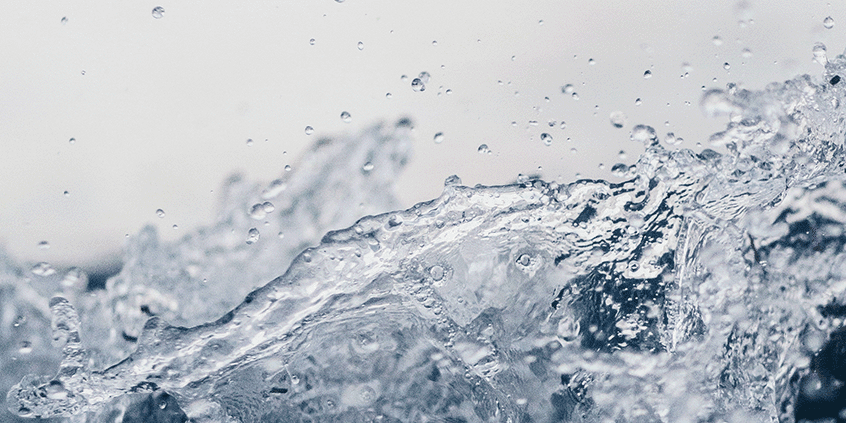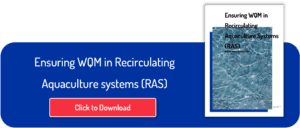
Recirculating Aquaculture Systems (RAS) have gained popularity for their efficiency and sustainability in fish farming. A key factor in the success of RAS operations is maintaining the best water quality. Clean and well-managed water contributes to the health and growth of the fish, ultimately leading to a thriving aquaculture venture. There are different ways to improve water quality, including our top 3.
-
Implementing Effective Filtration Systems
A robust filtration system is the backbone of any successful RAS operation. The primary goal is to remove solid waste, uneaten feed, and other debris from the water, preventing the accumulation of harmful substances. A good filtration is important to get out particles, dangerous gases and produce clear water. It is also critical for maintaining optimal water quality, supporting the health of our fish, There are three key filtration components.
- Mechanical Filtration: Utilizing mechanical filters to capture particulate matter suspended in the water. Drum filters, sand filters, microscreen filters, and settlement tanks are commonly employed to remove solids and improve water clarity. Regular maintenance and cleaning of mechanical filters are crucial to prevent clogging and maintain optimal functionality.
- Biological Filtration: Promotes the growth of beneficial bacteria responsible for converting toxic ammonia (NH₃) into less harmful nitrite (NO₂⁻) and eventually nitrate (NO₃⁻). Biofilters play a critical role in maintaining a stable nitrogen cycle within the RAS. Moving bed biofilters, fixed bed or trickling filters is often used for enhanced biological filtration efficiency. It is important to keep the condition for bacterial growth optimal.
- Fine Filtration: Incorporate fine filtration methods such as foam fractionators (protein skimmers) to remove dissolved organic compounds as proteins and improve overall water quality and clarity. Remember to adjust skimmer settings based on the specific needs of the aquatic species being cultivated.
-
Optimizing Oxygenation and Aeration
Adequately dissolved oxygen is crucial for fish health, growth, and well-being. Wrong oxygen levels, both high and low, plus too high hourly fluctuations can lead to unwanted situations that can affect the fish. In RAS systems, where water is continuously recirculated, optimizing oxygen levels becomes paramount. Proper aeration techniques enhance oxygen transfer and mitigate potential issues. There are different solutions for optimizing the oxygenation in RAS facilities, namely:
Oxygenation devices: Install diffusers, air stones, or other oxygenation devices to increase the surface area for oxygen exchange. This helps maintain optimal dissolved oxygen levels, especially in densely stocked systems.
- Monitoring and control: Implement real-time monitoring systems to track oxygen levels. Automated controls can adjust aeration rates based on fish density, water temperature, and other factors, ensuring consistent oxygen supply.
- Emergency backup systems: Install emergency backup aeration systems to address power outages or equipment failures. These safeguards prevent oxygen depletion during unforeseen circumstances.
-
Water Quality Monitoring
Continuous monitoring of water quality parameters is the foundation of effective RAS management. Regular testing allows aqua culturists to identify and address potential issues before they escalate. Maintaining water quality in RAS systems require continuous monitoring and proactive management. Identifying issues in a RAS farm before they escalate is crucial for the overall success and sustainability of the operation.
One of the main benefits of water quality monitoring is early detection and identification of potential issues. Detecting problems early allows for quick intervention to prevent or mitigate potential health issues among the fish. Common concerns include diseases, parasites, or stress-related conditions. Maintaining stable and favourable conditions in the RAS system supports healthy growth, reduces stress, and enhances the overall well-being of the aquatic organisms. Early identification enables timely corrective measures, reducing the risk of widespread infections or mortalities. Additionally, early detection contributes to the overall environmental sustainability of the RAS farm. By preventing water quality deterioration or system failures, the risk of environmental impact, such as nutrient discharge or contamination, is minimized. Monitoring also helps with the efficient use of resources, including energy and water. For example, addressing equipment malfunctions or leaks straightaway ensures that resources are not wasted, and that the system operates at its maximum efficiency. All of this allows for consistent and optimal conditions for fish growth, resulting in increased productivity and higher yields.
Implementing a comprehensive water quality monitoring program, you can track key parameters such as:
- Ammonia, Nitrite, and Nitrate Levels
- pH and Alkalinity
- Temperature
- Dissolved Oxygen
Which allows for quick adjustments to maintain optimal water quality conditions. This helps prevent adverse effects on fish health, growth, and overall performance.
Although it can seem like a big investment at the time, monitoring can lead to a reduction of operational costs. With timely identification and resolution of issues , you will be preventing equipment failures, optimizing feeding practices, and avoiding prolonged downtime, which contribute to cost savings in terms of maintenance, repairs, and resource consumption.
Monitoring water quality also allows for early identification and resolution of issues, which helps RAS farms meet regulatory requirements and standards. This is critical for maintaining the farm’s compliance with environmental regulations and ensuring responsible aquaculture practices.
In conclusion
In conclusion, enhancing water quality in a RAS system involves a combination of effective filtration, optimal oxygenation, and water quality monitoring. By implementing these best practices, aqua culturists can create a stable and healthy environment for their aquatic residents, promoting the success, sustainability, and profitability of their RAS operations.

